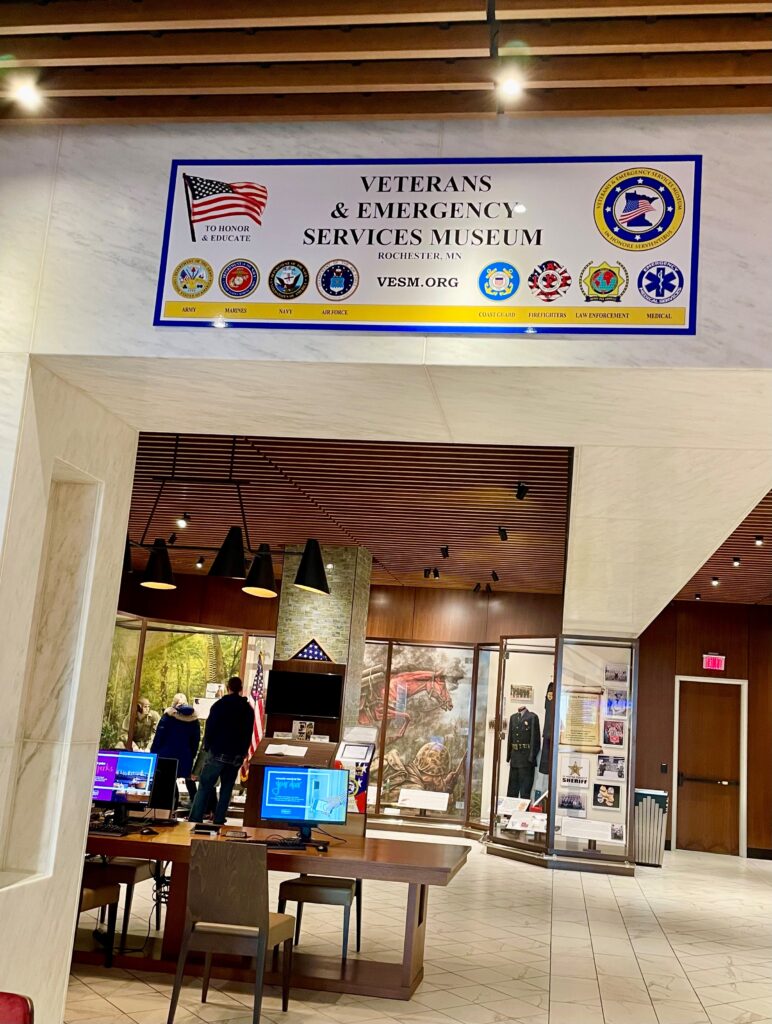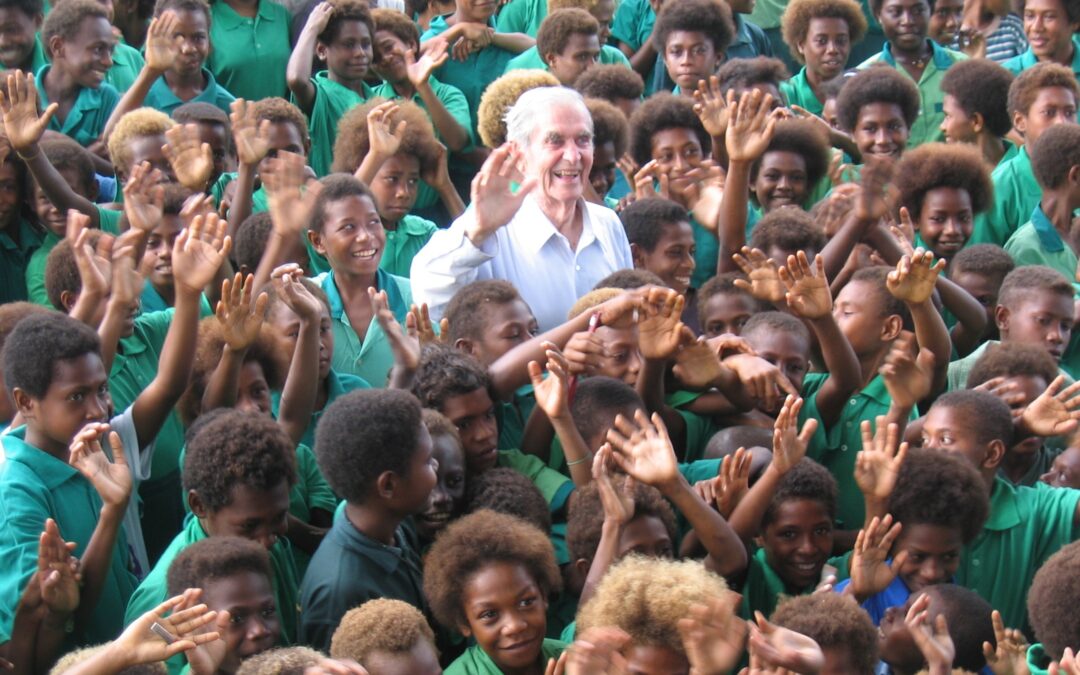Fred Hargesheimer visits with pupils of the Airmen’s Memorial School in Ewasse on Aug. 2, 2004, during a visit to the southwest Pacific island of New Britain, Papua New Guinea. As a World War II U.S. Army pilot, he was shot down over the Japanese-occupied island and was protected by villagers for months. In gratitude, he later built this and another school, libraries and a clinic, and he and his wife taught island children in the 1970s. (Photo:Geoff Heard)
By Geoffrey Heard – Geoffrey Heard, CC BY-SA 3.0, https://commons.wikimedia.org/w/index.php?curid=29231605
I will be 65 on Sunday. This milestone has been much on my mind. Although I do not feel old, I must be getting old, because I have actually heard the following things come out of my mouth:
- You call that music?
- Why is everyone mumbling?
- I need to leave early so I can get home before dark
- It’s too noisy in here
- That’s past my bedtime
I have also been thinking a lot about legacy – about what I will leave behind and what I need to finish. This was on my mind last week when I attended the truly fantastic Mayo Clinic Wound Symposium, “The Edges of Wound Care.” I wondered into a small exhibit area in the Hilton Hotel called the “Veterans and Emergency Services Museum.” I was drawn to a plaque recounting the story of Major Fred Hargesheimer, “Hargy”, who, like my father, was in the US Army Air Corps (before there was a separate Air Force) during WWII. The Rochester, MN native enlisted in 1940 and was assigned to the 5th Air Force 8th Photographic Reconnaissance Group. On June 5, 1943, he was on his 49th photo mission taking photos of New Guinea for Gen. McArthur’s upcoming campaign when he was shot down by a Japanese fighter over the Pacific island of Papua, New Britain (New Guinea). His P-38 had no guns since it had been retrofitted with mapping cameras. He was able to parachute to “safety”, 75 miles inside the Japanese lines. After surviving in the jungle for 31 days while hiding from Japanese troops, he was found by members of the Nakanai tribe who sheltered him for five months in the village of Ea Ea, risking their lives to protect him from being found by Japanese soldiers. He was eventually picked up by a US Navy submarine.
Maj. Hargesheimer survived the war and returned to Rochester to raise his family. However, he never forgot the villagers who saved his life and he wanted to repay them. He learned from missionaries that the village needed a school, so he made the 11,000 mile trip back to New Britain where he bought 12 acres of land near Ewasse and raised $15,000 to build the first elementary school, later called Airmen’s Memorial School. Fred also helped the natives start a palm oil plantation to create jobs. In 1969, a library and clinic were built, and Fred and his wife Dorothy moved there for 4 years to teach at the school. Following Dorothy’s death in 1985 from a heart attack, Fred made 16 trips back to New Britain. In 2006, at the age of 90, he made his final visit during which the tribe held a huge ceremony and gave him the title of “Suara Auru” – “Chief Warrior.” Fred Hargesheimer died on December 23rd, 2010, at the age of 94.
Interestingly, in 1999, aided by amateur Japanese historians, he contacted the wife of the man who had shot him down. He had always wondered why the pilot had not finished him off when he was parachuting to the ground. By then, Mitsugu Hyakutomi of Yamaguchi, Japan, was suffering from Alzheimer’s disease. However, his wife said that her husband had told her he could not kill defenseless parachuting fliers.
This story has been on my mind all week. My own father spent many weeks in the same jungle, fighting to survive. He lived to the age of 91, and like Fred, never forgot that life was a gift. Fred Hargesheimer started a new career after the age of 65, focused on giving back, although perhaps a better description was that he “played it forward.” I am grateful to be reminded of the way that God can take catastrophe and turn it into something good if we allow it. I am encouraged to think that I might just be getting started, and that from now on, I should focus on giving back just a fraction of what I have been given. Take a look at Fred in the photo above, taken in 2004, 61 years after being shot down over New Guinea. You see there a truly happy man.


Dr. Fife is a world renowned wound care physician dedicated to improving patient outcomes through quality driven care. Please visit my blog at CarolineFifeMD.com and my Youtube channel at https://www.youtube.com/c/carolinefifemd/videos
The opinions, comments, and content expressed or implied in my statements are solely my own and do not necessarily reflect the position or views of Intellicure or any of the boards on which I serve.



